Exhibition

Beez Neez now Chy Whella
Big Bear and Pepe Millard
Sat 10 May 2014 22:57
|
The Underground
Exhibition
 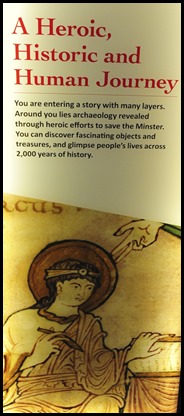   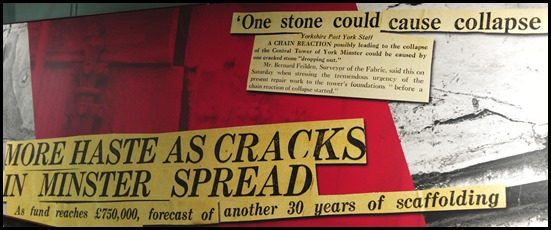 Uncertain Ground: Investigators found
major problems under the central tower. Over time its great weight has made it
sink into the ground. The present cathedral had also been built partly on top of
the foundation walls of earlier smaller structures. These walls were not strong
enough to support the much larger building.
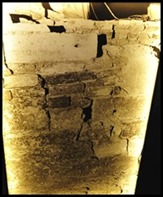  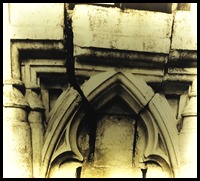 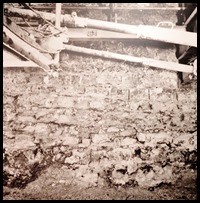  The Yorkshire Post: More than three
thousand sandbags are to be taken into York Minster to fill up holes to be made
by archaeologists. Mr. H.G. Ramm, from the Royal Commission on Historical
Monuments, said yesterday that the sandbags would be needed to fill in holes
deeper than six feet. The area under the central
tower, he said, was going to be taken out to a depth of six feet and the
archaeologists would be permitted to sink trenches into this area up to a
maximum depth of twelve feet.
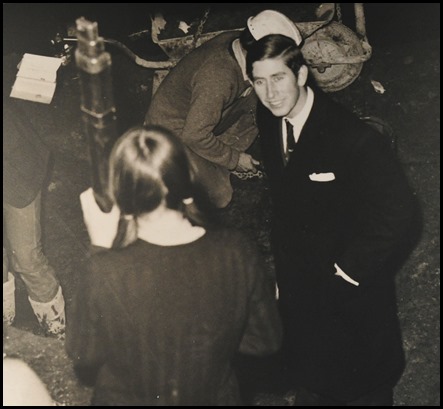 Penelope Walton Rogers, archaeologist
and finds officer, remembering 1969: In the evenings things became quieter and
the Minster organist would often come in to practise. Digging late into the
night could be a genuinely Gothic experience, with Bach’s toccata ringing in
your ears.... We may have had to work long hours, but the entertainment was
good.
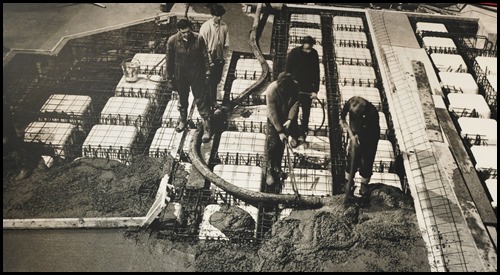 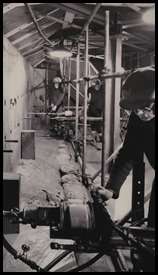 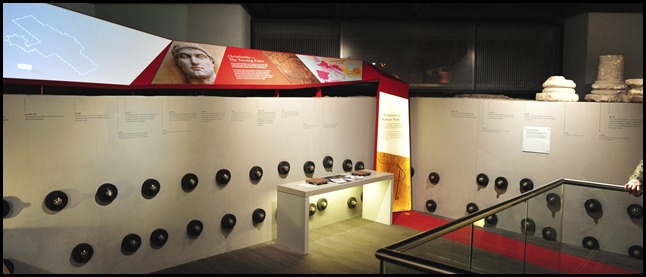 Bonds of
Steel: Nearly four hundred strengthening steel rods run through the
concrete, binding it to the old foundations.
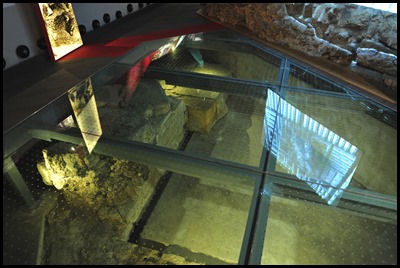 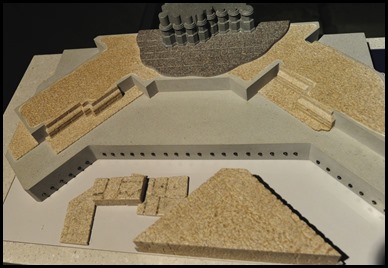 On Many
Levels: Under the glass lies the Norman level from the AD 300’s. Above
the concrete ledge ahead is the bottom of an outside wall of the Norman
Minster, built about 1080. The ground level around the Minster today is not much
higher than this. Above the inserted modern ceiling is the floor level of the
present Gothic Minster, dating from the 1200’s – it is higher than the ground
level outside.
People have lived, worked or
worshipped on this site for at least two thousand years. The first evidence of
Christianity found here is seventeen hundred years old. Archaeologists knew that
the Minster lay over the centre of York’s Roman fortress. What surprised them
was how much of the fortress was still buried under layers of later history.
Just above the Roman level they uncovered evidence of later Anglo-Saxon Minster.
 Clues to the Lost Minster: The first
Minster at York was built and maintained by Anglo-Saxon kings and archbishops.
No trace of the building has been found, but objects shed some light on the
missing Anglo-Saxon Minster. In about 1030 a Viking nobleman called Ulf presented this horn as a symbol or record of his gift
of lands to the Minster. The horn is carved from an elephant’s tusk and is known
as an Oliphant. Tradition holds that Ulf filled it with wine, placed it on the
Minster’s altar, and so dedicated his land to God and the Minster. This transfer
was later confirmed by King Edward the Confessor. Ulf’s horn was made in
southern Italy, probably in the important trading port of Amalfi, where
craftsmen had easy access to ivory. The animal motifs copied from Syrian and
Babylonian art.
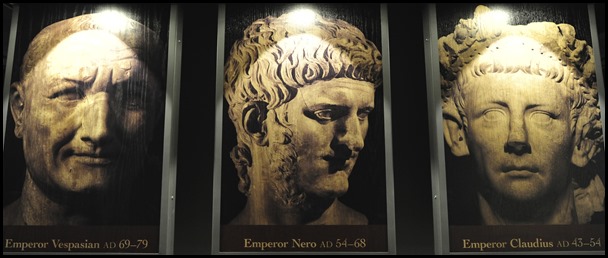 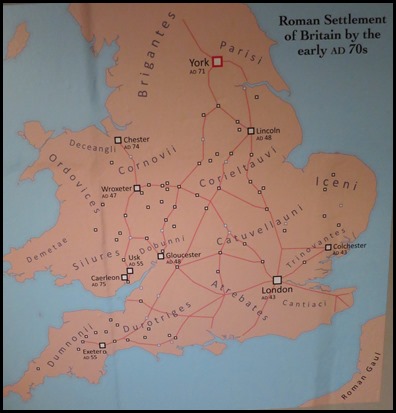 The present Minster sits above the
heart of the fortress at Eboracum – Roman York. From here, the army set
out to conquer northern Britain. This fortress was arguably the most important
military base in Roman Britain. Here, two emperors
died and one of the greatest was created.
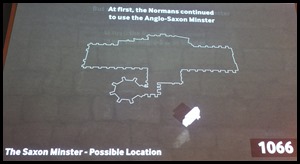 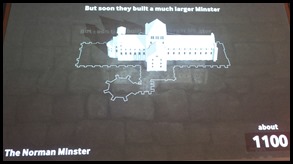  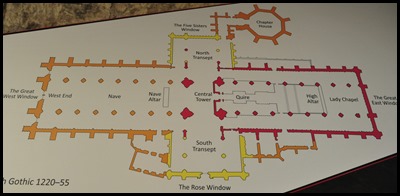  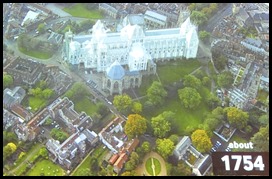 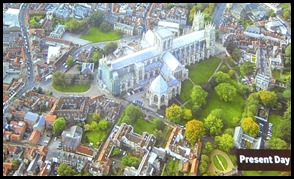 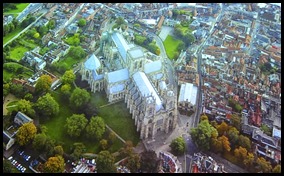 How the building has grown over the years. The Norman Minster was
one of the most impressive buildings in the land. It was gradually demolished
and replaced in stages by the present Gothic building. The work continued under
twenty Archbishops of York, many of whom helped to fund it. Improving the
Minster both glorified God and expressed their own power and status. The first
phase of rebuilding was begun around 1220 by Archbishop Walter de Gray. The
Minster was finally considered finished in 1472.
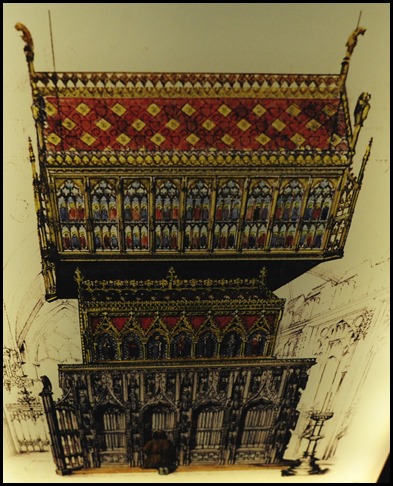 Artist’s
impression of the shrine of St William of York in the completed Gothic
Minster. It stood where the High Altar is now located.
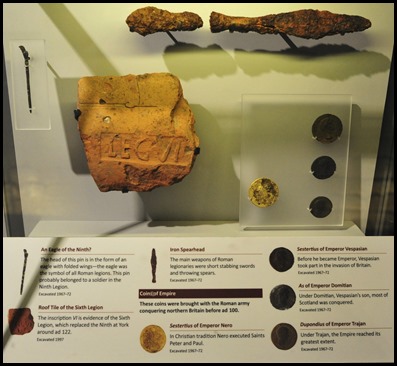 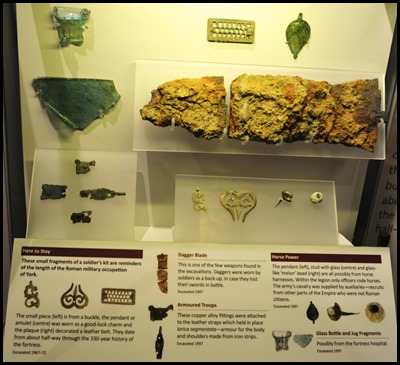 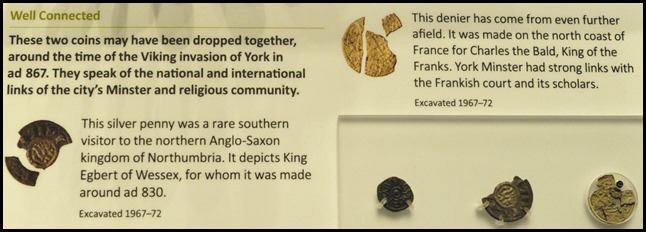  What happened to York just after the
end of Roman rule is unclear. Anglo-Saxons began settling in Britain, but the
city might have been largely abandoned. It reappears in historical records in AD
627 when the first Minster was built by Edwin, the Anglo-Saxon King of
Northumbria. The Minster remained at the heart of the city after Vikings seized
York in AD 867.
 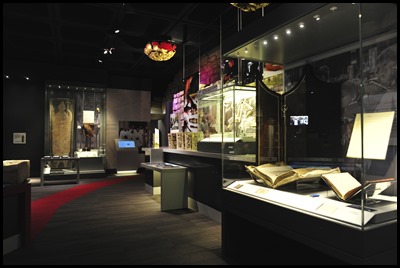 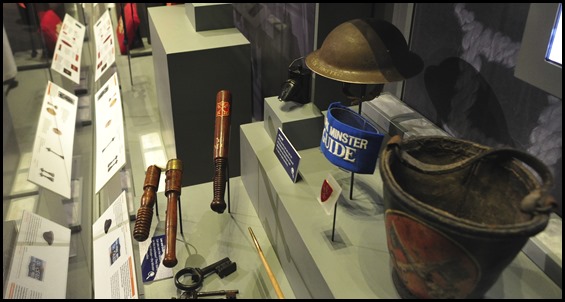 We rounded a corner and found
ourselves in an area full of displays.
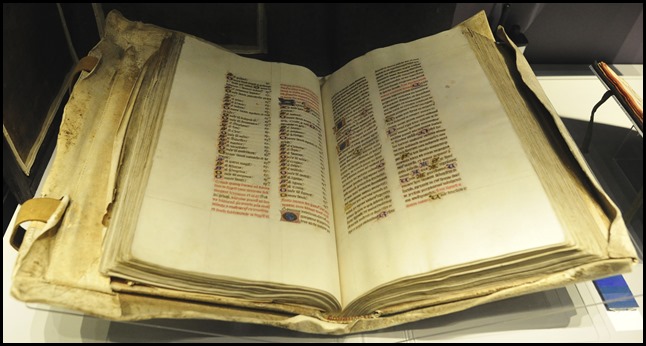 Missal of the Use
of York: A missal is a book used in the celebration of Mass or Holy
Communion. This missal dates from the mid-1400’s and contains wording and
instructions different from other versions of the Mass. This version is of the
Use of York, used in northern England before the reign of Henry
VIII.
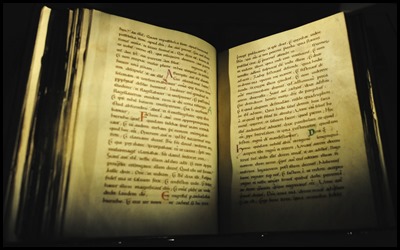 Gospel:
Comes from the Old English godspell meaning ‘good news’.
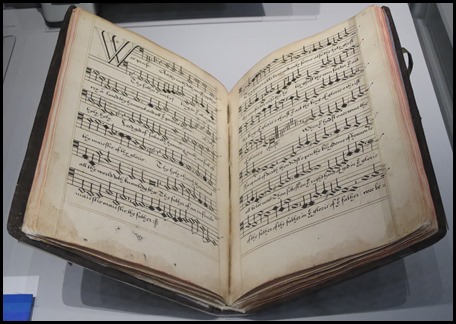 Part Book.
This is one of a set of five books in the Minster Archives written by the
Minster Choir and first used in about 1618. At that time each singer had a book
which showed his vocal only, and these were known as Part
Books.
  Stone
Coffin: This is not Archbishop de Grey’s coffin, but is similar in form
and also dates from the 1200’s. Medieval stone coffins indicate that a person
was of high status. The hole in the bottom allowed fluids from the decomposing
body to drain into the ground underneath.
The remains of Archbishop Walter de
Grey, found in a similar stone coffin. Note the space above his head for his
bishop’s mitre or hat.
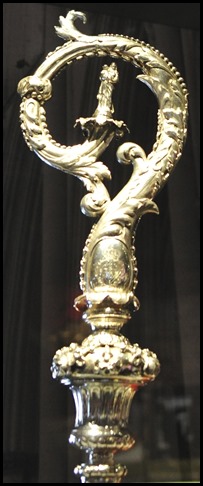 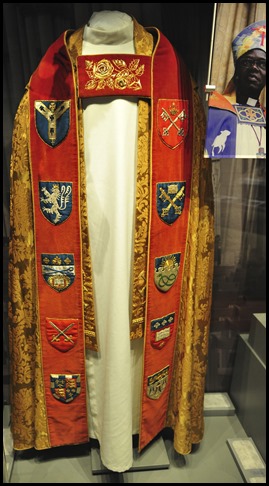 The Archbishop’s
Crosier: Bishops and archbishops carry crosiers shaped like shepherds’
crooks to symbolise their role as spiritual shepherds of people. This crosier is
still used by the Archbishop of York today and has a long and colourful
history.
In 1688 it was given by Queen
Catherine of Braganza – the Portuguese widow of Charles II – to the senior Roman
Catholic priest in northern England. As the priest was processing through York,
the Earl of Danby snatched the crosier from his hands. The Earl was clearly
offended by this display, at a time when Catholics were greatly distrusted in
England. By contrast, the crosier is today used as a symbol of unity between
Catholics and Protestants.
Archbishop Coggan’s Cope: Copes are
worn by all ranks of priest on some occasions, but are particularly associated
with bishops and archbishops.
This cope is of old-gold damask, and
was a gift from the Chapter of York to Donald Coggan, Archbishop of York from
1961 to 1974. The crossed keys are the symbol of St. Peter, to whom York Minster
is dedicated.
   Oh dear. Oh dear. Oh dear
me. I need to sit down.
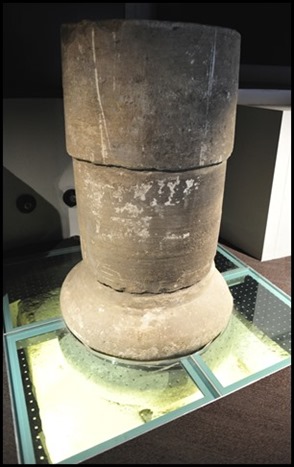 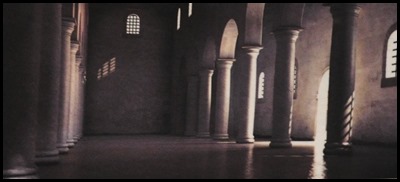 Thankfully, near the exit there was
an area with benches and three short films to watch. As we left we passed this
Roman column. We were near the spot where soldiers in
the Roman fortress proclaimed Constantine the Great their new emperor and
changed the course of history. Without this man, Christianity might have
remained a minor, persecuted religion. One thousand seven hundred years ago, we
would have been inside the basilica or ceremonial hall. This column is one of
the colonnades which ran down each side of the hall.
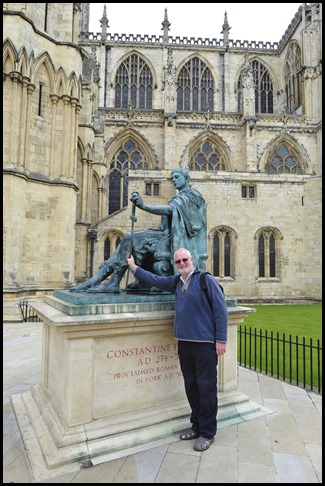 Outside, the man
himself is commemorated – which man – up to you dear
reader......
ALL IN ALL QUITE AN
INSIGHT |